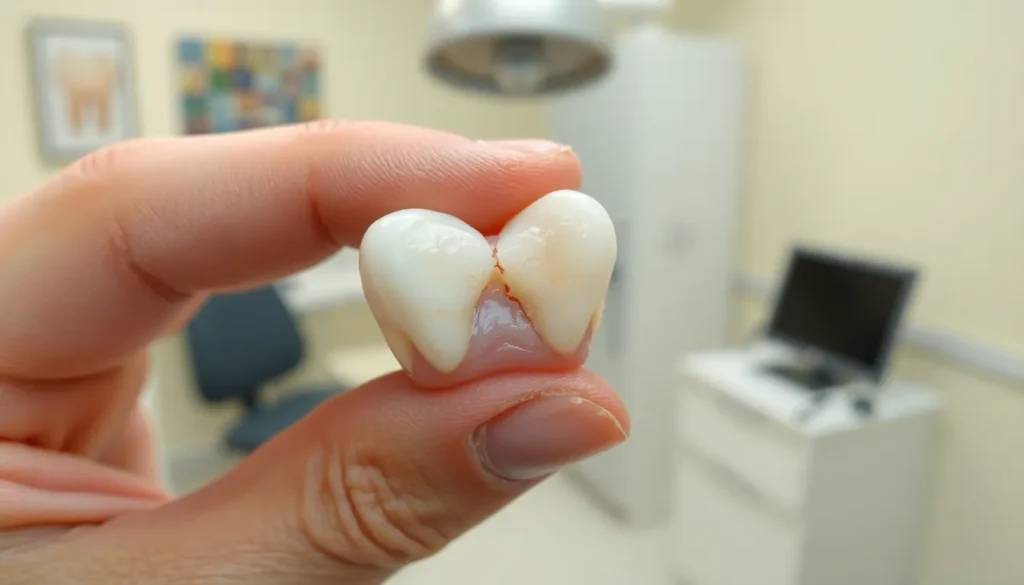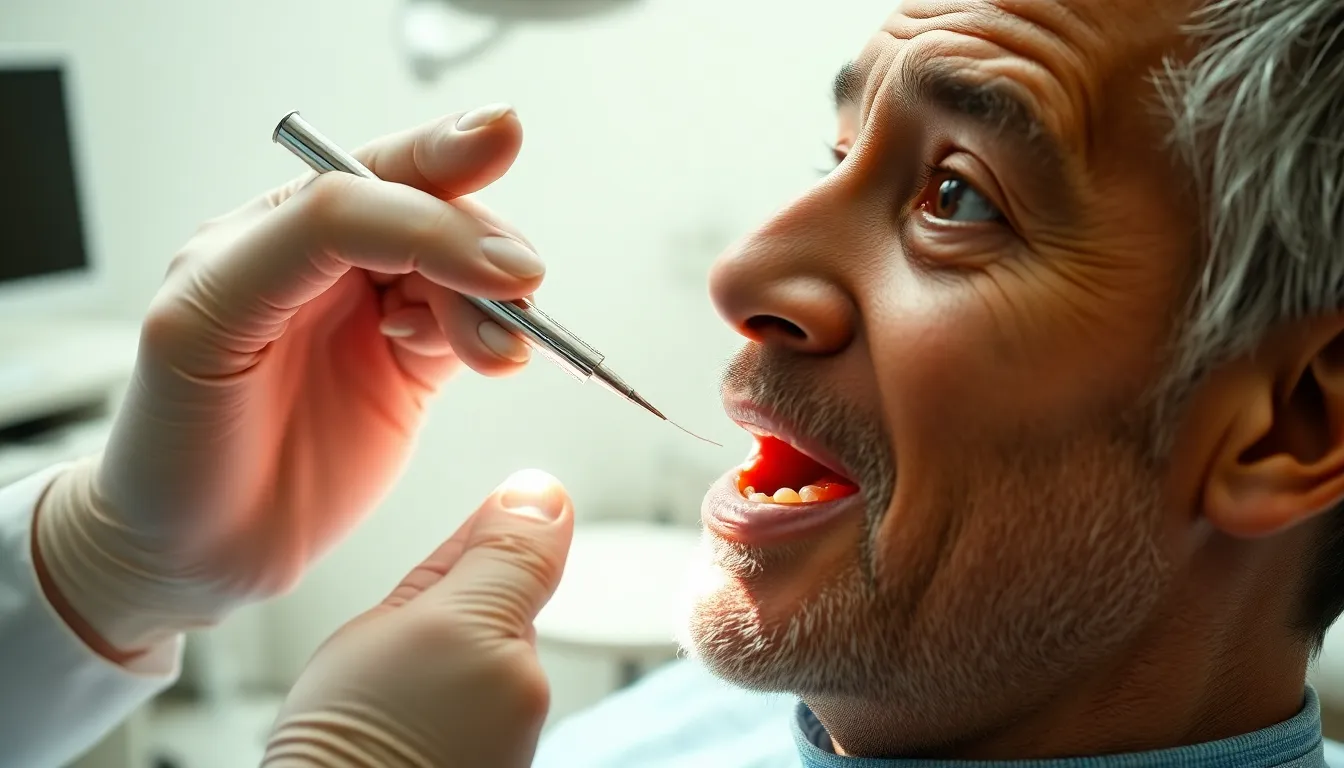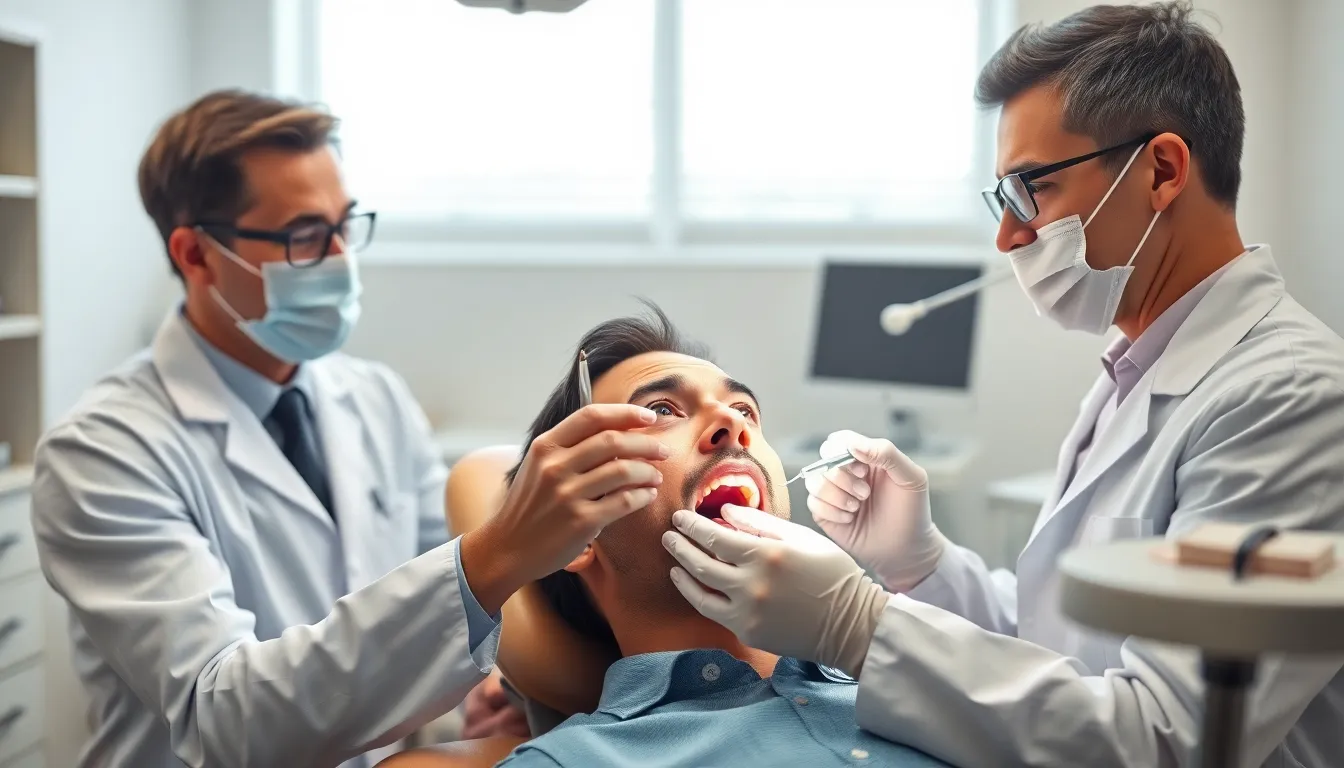Do you know what happens to a tooth without a crown after important damage? When your tooth’s structure is compromised from decay, fracture, or a large filling, leaving it unprotected can lead to serious complications that affect both your oral health and daily comfort.
A damaged tooth left without proper restoration is vulnerable to further breakage, infection, and potential loss. While you might be tempted to delay treatment due to cost or time constraints, understanding the risks and alternatives is crucial for making informed decisions about your dental care. Let’s explore what you need to know about managing a tooth that may need crown protection.
Understanding a Tooth Without a Crown
A tooth without a crown remains vulnerable when it has important damage or has undergone root canal therapy. Teeth naturally possess protective enamel—the hardest substance in your body—which shields the sensitive inner structures from daily wear and tear. Once this enamel becomes compromised through decay, fracture, or large fillings, the tooth’s structural integrity diminishes substantially.
Damaged teeth often display visible cracks, sharp edges, or missing portions that affect both function and appearance. These compromised teeth are typically more sensitive to temperature changes, pressure during chewing, and may cause discomfort during everyday activities. Your dentist recommends crowns specifically when a tooth has lost too much structure to support itself during normal use.
Dr. Todd B. Harris often shares the story of a patient who delayed getting a recommended crown for six months after a root canal. “The patient returned with a fractured tooth that extended below the gumline,” he explains. “What could have been resolved with a simple crown ended up requiring extraction and an implant—a procedure that cost three times more and required months of additional treatment.”
Without a crown, teeth that have undergone root canal therapy become particularly brittle over time. The removal of the pulp (the living tissue inside the tooth) during root canal treatment eliminates the tooth’s natural moisture supply, making it dry and prone to fracturing under normal biting forces. Essentially, these teeth function like hollow shells without their natural reinforcement system.
Large fillings also create structural concerns when left without crown protection. When more than 50% of a tooth’s natural structure has been replaced with filling material, the remaining tooth walls become thin and weak. These walls can flex during chewing, creating microscopic cracks that gradually expand with continued use, eventually leading to catastrophic fracture.
Common Reasons for Missing Crowns

Dental crowns are essential protective caps that shield damaged teeth from further harm. Understanding why crowns might be missing helps you address potential issues before they worsen.
Decay and Damage
Teeth compromised by extensive cavities or structural cracks become vulnerable when left without crown protection. The protective enamel layer deteriorates, creating pathways for bacteria to infiltrate deeper into the tooth structure. These exposed areas rapidly accumulate bacteria, accelerating decay progression and potentially necessitating more invasive treatments like root canals or extractions. Dr. Todd B. Harris often tells patients, “A small crack today can lead to a major fracture tomorrow if not properly protected with a crown.”
Failed Dental Treatments
Previous dental work sometimes requires crown reinforcement to maintain tooth integrity. Root canal treatments remove the blood supply to teeth, making them brittle over time. Large fillings can weaken remaining tooth structure, creating vulnerability points. When temporary crowns fall out or permanent crowns aren’t placed promptly, the underlying restored tooth faces important fracture and infection risks. A patient of Dr. Harris once postponed her crown placement after a root canal due to scheduling conflicts, only to return three weeks later with a vertically fractured tooth that couldn’t be saved—turning what would have been a simple crown into a much more complex and expensive implant procedure.
Risks of Leaving a Tooth Without a Crown
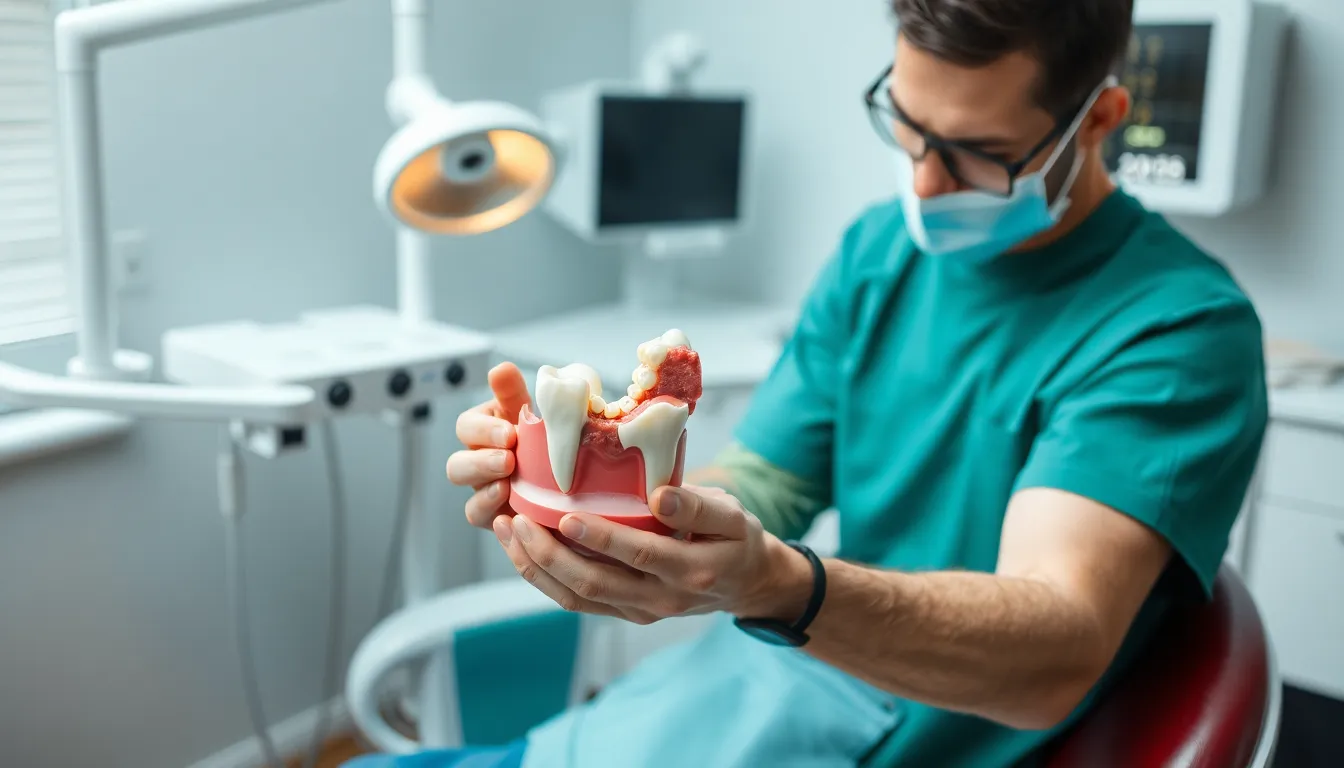
A compromised tooth left without a crown faces several serious complications that can lead to permanent damage and costly treatments. Understanding these risks helps you make informed decisions about your dental health.
Structural Vulnerability
Teeth weakened by decay, fractures, or large fillings become extremely susceptible to further damage without crown protection. Daily chewing forces exert important pressure on these vulnerable teeth, often resulting in additional cracks or complete fractures that can’t be repaired. The damage typically worsens over time, potentially transforming what could have been a simple crown procedure into a more complex extraction or dental implant case.
Dr. Todd B. Harris recalls a patient who delayed getting a crown after extensive decay removal: “She thought the large filling would be sufficient protection. Six months later, she bit into a sandwich and half her tooth sheared off. Unfortunately, the fracture extended below the gumline, making the tooth unsalvageable. What would’ve been an $1,200 crown became a $4,000 implant procedure.”
Infection Potential
Unprotected teeth create an open pathway for bacteria to invade deeper tooth structures, including the sensitive pulp and nerve tissues. These bacterial invasions frequently lead to painful abscesses and infections that can spread to surrounding tissues. Your risk of requiring emergency root canal treatment increases dramatically when leaving a vulnerable tooth exposed.
Bacterial penetration doesn’t just affect the compromised tooth—it can spread to adjacent teeth and gum tissues, potentially causing periodontal disease or even systemic health issues. Patients often report intense pain, swelling, and difficulty eating once infection takes hold.
“I’ve seen simple cavities transform into serious infections requiring hospitalization because patients postponed crown placement,” notes Dr. Harris. “One particular case involved a patient who had root canal therapy but skipped the crown appointment. Six months later, bacteria infiltrated through microscopic cracks in the tooth, causing an infection that spread to the facial tissues. What could have been prevented with a crown resulted in IV antibiotics and a much more complicated treatment plan.”
Living with an uncrowned tooth also typically causes increased sensitivity, persistent discomfort, and often leads to changes in eating habits as patients avoid chewing on the affected side. The financial implications grow substantially—the cost of addressing complications from an unprotected tooth averages 3-5 times higher than the initial crown investment.
Treatment Options for Uncovered Teeth

Treatment options for uncovered teeth vary based on the exact damage, level of exposure, and symptoms you’re experiencing. Dr. Todd B. Harris emphasizes that addressing uncovered teeth promptly prevents more extensive and expensive treatments later.
Temporary Protection Measures
Temporary protection measures offer immediate relief while you consider permanent answers. Dental bonding applies protective material directly to exposed tooth roots, reducing sensitivity and preventing further damage. “I recently treated a patient who was experiencing extreme sensitivity due to exposed roots,” shares Dr. Harris. “A simple bonding procedure provided immediate relief while we planned her comprehensive treatment.”
Gingival masks serve as removable artificial gums for multiple teeth with recession, improving both protection and appearance until permanent treatment can be completed. Custom mouthguards protect uncovered teeth from grinding forces, particularly during sleep when unconscious clenching often occurs. These protective devices distribute pressure evenly across your dental arch, preventing concentrated force on vulnerable teeth.
Permanent Restoration Answers
Dental crowns provide comprehensive protection for teeth with compromised natural crowns. These custom-fitted caps completely encase the damaged tooth, restoring function and preventing further deterioration. Root canal therapy becomes necessary when infection reaches the pulp or root, removing infected tissue and sealing the tooth before crown placement.
Gum grafting offers a biological solution for root exposure caused by receding gums. Modern techniques like the Chao pinhole technique or Pat Allen tunneling method use donor collagen for faster healing with minimal discomfort. “One of my patients avoided smiling for years due to exposed roots,” Dr. Harris recalls. “After gum grafting, not only did her sensitivity disappear, but her confidence returned completely.”
Dental implants represent the ultimate solution for teeth damaged beyond repair. These titanium posts inserted into the jawbone anchor prosthetic teeth permanently, preventing bone loss and maintaining oral function. Though more costly initially, implants often prove more economical long-term compared to repeated treatments for deteriorating teeth.
When to Seek Emergency Dental Care

Losing a crown or having a tooth without proper protection sometimes constitutes a dental emergency that requires immediate attention. Dental professionals categorize crown loss as an urgent situation, especially when it results in pain or exposes the tooth’s vulnerable inner structures. Your exposed tooth faces increased risks of infection, further damage, and potential tooth loss when left unprotected.
Signs to Seek Emergency Care Include:
- Intense pain or sensitivity in the exposed tooth area
- Visible damage such as cracks, chips, or fractures extending into the tooth
- Infection indicators including swelling, pus formation, or abscess development
- Trauma that has displaced or completely dislodged the crown
- Inability to eat properly or risk of additional injury to the exposed tooth
Dr. Todd B. Harris recalls a patient who ignored the loss of a temporary crown over a weekend, assuming Monday would be soon enough for treatment. “By the time she came in, bacteria had invaded the exposed tooth structure, creating an infection that required emergency root canal therapy plus to a new crown—transforming a simple recement procedure into a much more complex and expensive treatment plan,” explains Dr. Harris.
Immediate Actions:
- Contact your dentist immediately for guidance and to schedule an emergency appointment
- If you have a regular dentist, call their emergency number to determine the urgency of your situation
- Visit a nearby emergency dental clinic or urgent care facility with dental services if you don’t have a regular provider
- Protect the exposed tooth by avoiding chewing on that side and maintaining excellent oral hygiene
- Use dental wax from a pharmacy to temporarily cover any sharp edges if the tooth is causing soft tissue irritation
Why Prompt Care is Important:
Bacteria rapidly colonize an unprotected tooth, potentially leading to decay or abscess formation within days. Emergency dental care prevents these complications from developing and preserves your tooth structure. Patients who delay treatment often experience severe pain that interrupts sleep and daily activities, along with the spread of infection to surrounding tissues.
According to dental emergency guidelines, tooth fractures and crown loss require evaluation within 24-48 hours to prevent permanent damage. Treatment costs typically increase threefold when emergency complications develop, making prompt care both medically prudent and financially sensible.
Cost Considerations for Dental Crowns
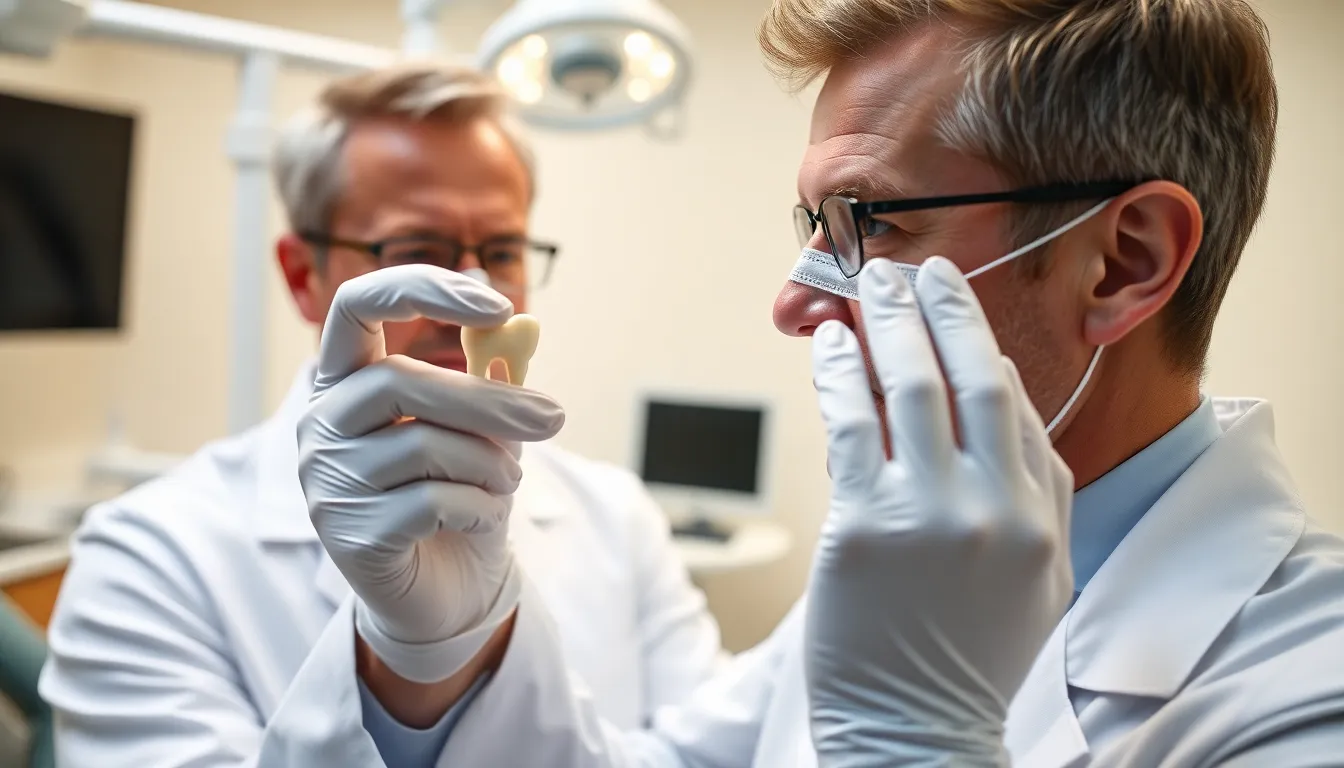
Dental crown costs vary significantly based on several key factors that impact your overall investment in tooth restoration. Material selection represents one of the most influential aspects of pricing, with multiple options available to suit different needs and budgets. Geographic location and dentist expertise also play substantial roles in determining the final price you’ll pay for crown treatment.
Material Choices and Cost Implications
Porcelain crowns offer exceptional aesthetic results that closely mimic natural teeth, priced between $800 and $3,000 per tooth. Their natural appearance makes them particularly popular for front teeth where visibility matters most. Metal alloy crowns provide superior strength and longevity at a more moderate price range of $600 to $2,500, making them practical options for less visible molars. Ceramic crowns strike a balance between visual appeal and durability, typically costing between $700 and $2,800 depending on the exact ceramic material used.
“I’ve had patients delay crown treatment due to cost concerns, only to return needing much more extensive work,” shares Dr. Todd B. Harris. “One patient opted against a $1,200 crown after root canal therapy, believing it was too expensive. Six months later, the unprotected tooth fractured below the gumline, requiring extraction and an implant that cost nearly $4,500.”
Labor and Expertise Costs
Dentist experience directly influences the price you’ll pay for crown treatment, with specialists often charging premium rates for their advanced skills. Metropolitan dental practices typically command higher fees than rural locations due to increased operating expenses and market demand. Complex cases requiring additional preparation or specialized techniques increase labor costs substantially, particularly when dealing with severely damaged teeth or complicated bite issues.
Insurance Coverage
Dental insurance typically covers approximately 50% of crown costs, providing important financial relief for those with comprehensive plans. Coverage limitations vary widely between insurance providers, with some plans imposing waiting periods or annual maximums that restrict benefits. Without insurance, the average dental crown costs between $800 and $1,500 per tooth, though prices can exceed this range for premium materials or complex cases.
Postponing crown treatment to avoid immediate costs frequently leads to more expensive procedures later. Unprotected teeth continue deteriorating, often resulting in treatments costing 3-5 times more than the original crown would have. Many dental offices offer payment plans to make crown treatment more accessible, allowing you to protect your dental health while managing costs effectively.
Preventive Care for Crowned and Uncrowned Teeth
Daily Hygiene Practices
Maintaining proper daily hygiene protects both crowned and uncrowned teeth from decay and damage. Brush your teeth twice daily with fluoride toothpaste to remove plaque buildup that can lead to cavities. Floss at least once a day to clean between teeth where toothbrushes can’t reach. For uncrowned teeth with compromised structure, gentle cleaning is essential to prevent further damage while still removing harmful bacteria.
Dr. Todd B. Harris emphasizes, “My patients who commit to rigorous oral hygiene routines experience significantly fewer complications with their uncrowned teeth. One patient maintained an exposed tooth for several weeks before crown placement through meticulous cleaning and careful eating habits, preventing any additional damage during the waiting period.”
Professional Monitoring and Cleanings
Regular dental check-ups provide crucial monitoring for teeth without crowns. Professional cleanings remove tartar buildup that home care can’t address. During these appointments, dentists examine uncrowned teeth for signs of worsening cracks, decay, or sensitivity that might indicate the need for intervention.
Professional monitoring includes:
- Detailed examination of tooth structure integrity
- Assessment of any composite restorations or partial coverage restorations
- Evaluation of bite forces that might affect vulnerable teeth
- Early detection of decay around existing fillings
Dietary Considerations
Your diet directly impacts the longevity of uncrowned teeth. Hard foods like nuts, ice, and hard candies can fracture already compromised teeth. Sticky foods such as caramels and taffy may dislodge temporary restorations or damage weakened tooth structures. Acidic beverages including sodas and citrus juices erode remaining enamel on vulnerable teeth without crowns.
“I had a patient who avoided getting a crown due to cost concerns,” recalls Dr. Harris. “She continued eating normally, including hard candies and nuts, which eventually fractured her tooth beyond repair. What would have been a simple crown became a $4,500 implant procedure—more than five times the cost of the initial crown.”
Temporary Protection Measures
Temporary protection measures safeguard uncrowned teeth while awaiting permanent restoration. Inlays and onlays provide custom-made porcelain partial coverage that preserves more natural tooth structure than full crowns. These restorations fit precisely inside the tooth (inlays) or cover one or more cusps (onlays), protecting damaged areas while maintaining healthy tooth material.
Composite resin restorations offer another effective alternative for teeth without crowns. This tooth-colored material bonds directly to the prepared tooth, providing both strength and aesthetic appeal. Studies confirm these restorations can effectively restore tooth function and form without requiring full crown coverage.
Preventive Products and Tools
Specialized products help protect teeth without crowns from further damage. Sensitivity-reducing toothpastes contain compounds that block pain signals from exposed dentin to nerve tissues. Fluoride rinses strengthen remaining enamel and help prevent decay around existing restorations or compromised areas.
Custom nightguards protect vulnerable teeth from grinding forces during sleep. For teeth missing important structure, temporary dental cement products can seal exposed areas until proper restoration occurs, reducing sensitivity and preventing bacterial infiltration.
Long-term Maintenance Strategies
Long-term maintenance of uncrowned teeth requires consistent attention and care. Dental veneers provide an alternative for front teeth by covering only the facial surface with a thin porcelain shell, preserving more tooth structure than full crowns. Though primarily used for anterior teeth, veneers offer adequate protection when biting forces aren’t excessive.
For posterior teeth lacking sufficient structure for stand-alone function, dentists often build them up with composite resin material first. This creates a solid foundation that either functions independently or supports a future crown if needed.
Remember that preventive care for uncrowned teeth isn’t indefinite—a tooth lacking proper coverage remains vulnerable to damage, sensitivity, and decay. While these preventive measures extend the lifespan of compromised teeth, they don’t replace the comprehensive protection that appropriate restorations provide for severely damaged teeth.
Conclusion
Protecting your compromised teeth isn’t just about aesthetics—it’s about preserving your long-term oral health. Leaving a damaged tooth without proper crown protection puts you at important risk for fractures infection and potentially tooth loss.
While cost concerns might tempt you to delay treatment remember that preventive care now saves substantial money and discomfort later. The investment in a crown typically costs 3-5 times less than the treatments required after a tooth fails completely.
Don’t wait until pain forces you into an emergency appointment. Consult with your dentist about appropriate protection options for your exact situation whether it’s a full crown inlay or temporary solution. Your future self will thank you for making this proactive decision to safeguard your smile and oral function.
Frequently Asked Questions
What happens if I don’t get a crown on my damaged tooth?
Without a crown, a damaged tooth remains vulnerable to further breakage, infection, and possible tooth loss. The compromised structure loses protection, making it susceptible to cracks and increased sensitivity. Everyday chewing forces can cause catastrophic fractures, especially in teeth with large fillings or those that have undergone root canal treatment. Bacteria can also infiltrate deeper structures, potentially leading to painful abscesses and emergency treatments.
How long can I safely wait before getting a crown?
There’s no safe waiting period for a tooth that needs a crown. Once your dentist recommends a crown, any delay increases risks of fracture, infection, or irreparable damage. Teeth that have had root canals become increasingly brittle over time, and those with large fillings or cracks can suddenly break during normal chewing. What begins as a simple crown procedure can quickly escalate to requiring extraction and implant placement if postponed.
Are temporary protection measures effective for uncovered teeth?
Temporary measures like dental bonding, gingival masks, and custom mouthguards can provide short-term protection while you arrange for permanent treatment. However, these solutions aren’t designed for long-term use and don’t offer the comprehensive protection of a dental crown. They can help manage sensitivity and prevent some damage, but they shouldn’t replace proper restoration as recommended by your dentist.
How much more expensive is it to delay getting a crown?
Delaying a crown typically results in costs 3-5 times higher than the initial investment. When teeth fracture beyond repair, treatments escalate to extractions and replacements like implants or bridges. For example, a $1,200 crown might seem expensive, but the $5,000+ for an implant after tooth loss is significantly more. Additionally, emergency treatments for infections or severe pain often add unexpected costs and discomfort.
Does dental insurance cover crown procedures?
Dental insurance typically covers about 50% of crown costs, though coverage varies by plan. Most plans have annual maximums of $1,000-$1,500, which may not fully cover a crown procedure. Pre-existing conditions or waiting periods might affect coverage eligibility. Many dental offices offer payment plans to make treatment more accessible. It’s advisable to verify your specific coverage and discuss financial options with your dental provider.
What are the signs I need emergency dental care for an uncrowned tooth?
Seek emergency dental care if you experience intense, persistent pain; visible damage like fractures or chips; signs of infection (swelling, pus, fever); trauma from accidents; or difficulty eating. Rapid onset of sensitivity to temperature extremes can also indicate a serious issue. Contact your dentist immediately if you’ve lost a temporary crown or if an unprotected tooth begins causing discomfort, as bacteria can quickly cause decay or abscess formation.
Can I protect my uncrowned tooth with special home care?
While awaiting a crown, you can provide limited protection through rigorous oral hygiene (gentle brushing with fluoride toothpaste and daily flossing), avoiding hard and sticky foods, and using sensitivity-reducing toothpaste. However, these measures only minimize risks rather than eliminate them. Dr. Harris emphasizes that home care cannot replace the structural protection a crown provides, especially for teeth weakened by root canals or large fillings.
What are the most cost-effective crown options available?
Metal alloy crowns (gold or metal blends) are typically the most cost-effective, ranging from $600-$2,500, and offer excellent durability. Porcelain-fused-to-metal crowns provide a balance of strength and aesthetics at moderate prices. While all-porcelain or all-ceramic options cost more ($800-$3,000), they offer superior aesthetics for front teeth. The most cost-effective approach is choosing the appropriate material for your specific tooth’s location and function, based on your dentist’s recommendation.

